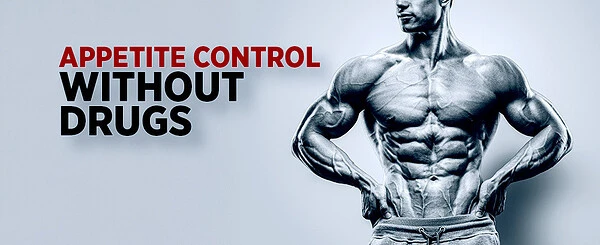Appetite Control Without Pharmaceuticals
Author: Chris Shugart
During a diet, you aren't compelled to rely on injections to rein in your appetite. Instead, consider these health - promoting, natural alternatives.
The Concept of a Balanced Appetite
The ideal diet is one that leaves you feeling satiated. Paradoxically, the worst - case scenario might be having no hunger pangs whatsoever. There lies a crucial distinction. Quelling hunger by consuming nutritious, filling foods is a healthy practice. Conversely, a complete absence of hunger is a red flag. After all, loss of appetite often signals the advanced stages of various diseases, with death being the ultimate consequence.
The Pitfalls of Semaglutide - based Weight - loss Drugs
One of the challenges associated with weight - loss drugs like semaglutide (marketed as Ozempic and Wegovy, which are GLP - 1 receptor agonists) is two - fold. Firstly, these injectables primarily suppress hunger by decelerating gastric emptying and regulating blood sugar levels. Although they seem to achieve short - term results, most users experience weight regain once they discontinue use. Current research indicates that users typically regain around two - thirds of the weight they lost. In some cases, they even regain more weight than they initially shed while on the drug.
Secondly, there is the issue of metabolism impairment. When appetite completely vanishes, protein intake is insufficient to preserve muscle mass. Muscle loss, in turn, slows down the metabolism, leading to weight regain, even if an individual consumes the same number of calories that previously maintained their weight.
Natural Alternatives for Appetite Control
Thankfully, there exists an alternative approach to appetite management: incorporating healthy foods and supplements, many of which operate through mechanisms similar to those of the drugs.
Four Foods and Supplements for Appetite Regulation
The objective isn't to eliminate the urge to eat entirely. Instead, it's about reducing calorie intake without experiencing the pangs of starvation and making it more effortless to select foods that align with your dietary goals.
1. Protein
Protein is the most satiating macronutrient and also highly thermogenic. Attempt to over - consume protein to gain body fat, and you'll quickly find yourself feeling overly full while burning more calories.
A low - protein diet, on the contrary, often triggers overeating and cravings. When your body doesn't reach its natural protein threshold, it sends signals for more. The catch? Most people instinctively reach for carbohydrate - rich snacks instead of protein. Based on studies, the minimum amount of protein required to suppress hunger ranges from 85 to 138 grams per day, which is considerably less than the average American's intake.
To ensure proper hunger regulation, make sure you meet this minimum protein requirement. An easy way is to have at least one, two - scoop MD Protein (available for purchase on Amazon) shake daily. You can also use MD Protein to create satisfying snacks. For controlling calorie intake during large meals, consider the protein pre - loading strategy by having a scoop 20 minutes before eating.
2. Psyllium
Psyllium has been dubbed the "poor man's Ozempic." It is a form of soluble fiber derived from the seeds of the Plantago ovata plant. Commonly known as Metamucil (available on Amazon), the orange - flavored drink often associated with promoting regular bowel movements in the elderly, psyllium has far more utility.
Consume a serving with a large glass of water 20 minutes prior to big meals, and you'll notice a painless reduction in your food intake. Alternatively, have it between meals when hunger strikes. In the digestive tract, psyllium transforms into a gel - like substance, fostering a feeling of fullness. It also regulates the release of ghrelin and Peptide YY, enhancing the effects of these hunger - controlling peptides. Additionally, psyllium supports the growth of healthy gut bacteria.
As an alternative, glucomannan, a root fiber, functions similarly (1).
3. Omega - 3 Fatty Acids (Fish Oil)
A study by Howe in 2014 posits that omega - 3s “... offer multiple mechanisms to counteract obesity, including appetite suppression.”
Researchers suspect this may be related to brain neurogenesis and neuroplasticity. Omega - 3s increase the levels of PYY and leptin, the hormones that signal satiety, while reducing ghrelin, the hunger - stimulating hormone. As with most applications of fish oil, the benefits are dose - dependent, and a substantial intake of omega - 3s is required to achieve appetite - control effects. Three capsules of Flameout (available on Amazon) should suffice.
4. Green Tea
A meta - study indicates that the combination of green tea catechins and caffeine significantly boosts energy expenditure and fat oxidation while assisting with appetite control (2). While caffeine may decrease your perception of hunger, it's likely the catechins that play the primary role. Green tea catechins modulate the appetite - regulating hormones (ghrelin and leptin), ultimately reducing hunger.
Green tea also appears to enhance blood sugar control and insulin sensitivity. Stable blood sugar levels help to reduce cravings. Some studies suggest that green tea may delay gastric emptying, prolonging the feeling of fullness.
Relatedly, Yerba mate drinks contain saponins, which may slow down stomach emptying and contribute to a feeling of fullness. However, research in this area is limited.
If you're not fond of drinking brewed green tea, you can obtain a concentrated dose of green tea catechins in Biotest Superfood (available on Amazon).
References
Walsh, D. E., Yaghoubian, V., Behforooz, A., & Effect of glucomannan on obese patients: a clinical study. (1984). International journal of obesity, 8(4), 289 - 293.
Hursel, R., Viechtbauer, W., Westerterp - Plantenga, M. S. (2009). The effects of green tea on weight loss and weight maintenance: a meta - analysis.
T Nation earns from qualifying purchases as an Amazon Associate. Read more about our policy.
Natural GLP-1 Receptor Agonists
•
Author: Hamid
•
fitness
sport
life

Share this article
